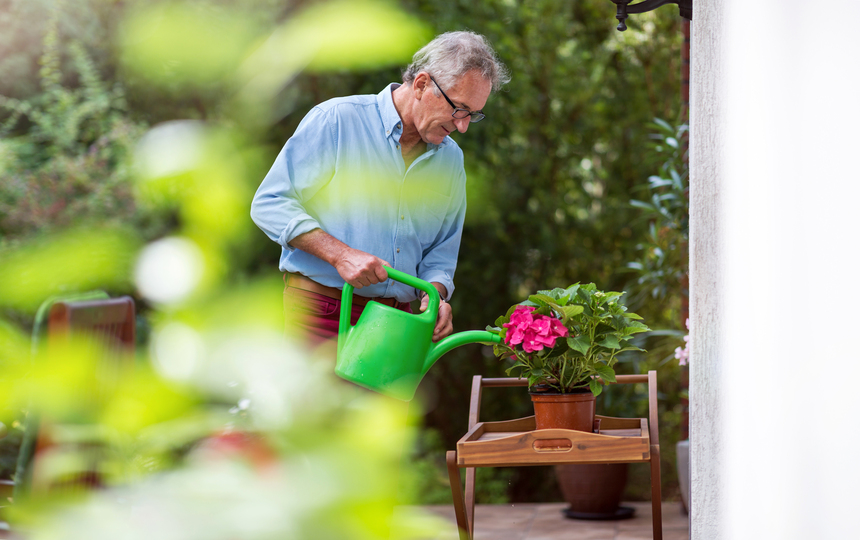Living in retirement community homes offers a unique opportunity to pursue hobbies and activities that enhance the quality of life. One such activity that’s gaining popularity in senior homes in Houston, TX, is gardening. In addition to providing a sense of accomplishment, gardening in your golden years also offers various health benefits, such as improved motor skills, reduced stress levels, and a boost in mood.
However, if you share your home with a pet, it’s essential to choose plants that are safe for your furry companions. Here are seven pet-friendly plants that you can safely grow in your retirement community home in Houston. Keep reading to find out more valuable insights regarding the world of plants.
Spider Plant (Chlorophytum Comosum)
Spider plants are a favorite choice for many people who are new to gardening. Known for their ability to thrive in a variety of indoor conditions, these hardy plants can adapt to a range of light levels, making them perfect for various spaces in your retirement home. Spider plants are not only visually appealing, with their bright green, variegated leaves, but they’re also a great source of clean, fresh air.
They absorb toxins from the environment and are completely safe for your pets. They’re resistant to most pests, and their offshoots can be potted to create more plants, giving you a fun, easy, and engaging gardening activity.
Boston Fern (Nephrolepis Exaltata)
Boston ferns, characterized by their feathery, arching fronds, are known for their beauty and air-purifying abilities. As a plant native to subtropical and tropical regions, they flourish in the Houston climate, which can mimic their natural humid environment. Although they require a little more care than some other houseplants, the lush greenery they provide is worth the effort.
Swedish Ivy (Plectranthus Australis)
Swedish Ivy is a quick-growing, easy-to-care-for plant that is an excellent choice for beginners. Its trailing nature makes it perfect for hanging baskets or high shelves where its verdant foliage can spill over the sides. With its velvety leaves and delicate, white or lavender flowers, it makes a lovely addition to any indoor garden. While it enjoys bright, indirect light, it can tolerate lower light levels, providing flexibility in where you can place it in your home.
Areca Palm (Dypsis Lutescens)
The Areca palm, or butterfly palm, is an excellent addition to your indoor garden. This palm stands out with its feathery, arching fronds that can reach up to 6-7 feet indoors. While they’re a bit more demanding in their care, requiring bright, indirect light and good humidity levels, the tropical ambiance they provide makes it worthwhile.
Prayer Plant (Maranta Leuconeura)
Prayer plants are an exciting addition to any indoor garden, with their strikingly patterned leaves and unique nighttime movements. When the sun sets, the leaves of the prayer plant fold together, resembling hands in prayer, giving it its common name. They prefer low to medium light and high humidity levels, making them a suitable plant for Houston’s climate. The prayer plant requires moist soil, but be cautious to avoid overwatering to prevent root rot.
Parlor Palm (Chamaedorea Elegans)
Parlor palms are another great choice for pet owners. They are compact and slow-growing, typically reaching between 2 to 6 feet tall, which is manageable for most homes. With its rich green leaves and elegant appearance, it adds a touch of sophistication to any room. This palm prefers lower light conditions and cooler temperatures compared to many other tropical plants, which means it can thrive in less sunny spots of your home.
Barberton Daisy (Gerbera Jamesonii)
Barberton Daisies, also known as Gerbera Daisies, are a wonderful way to bring a vibrant pop of color to your home. Renowned for their large, cheerful blooms in a variety of colors from bright yellows, reds, pinks, to whites, they can brighten up any space. This plant prefers bright light, so a sunny window would be an ideal spot.
Proper care requires well-drained soil, and careful watering as they are prone to root rot if overwatered. Not only do these plants purify the air by releasing oxygen, but they are also safe for pets, allowing you to enjoy their dazzling blooms without concern for your pet’s health.
Create a Safe, Green Haven in Your Retirement Home
Gardening in your retirement community home can be a rewarding experience, providing both therapeutic benefits and the joy of watching something grow. Choosing pet-friendly plants ensures that you create a safe environment for your furry friends while still enjoying your green haven. Whether you live in Houston or elsewhere, remember that a green thumb has no age limit. Happy gardening!







